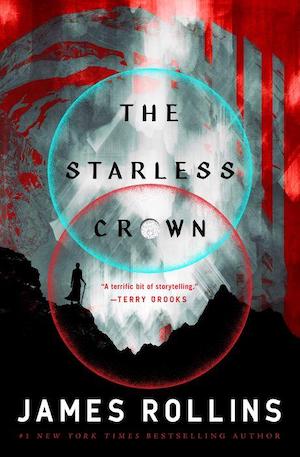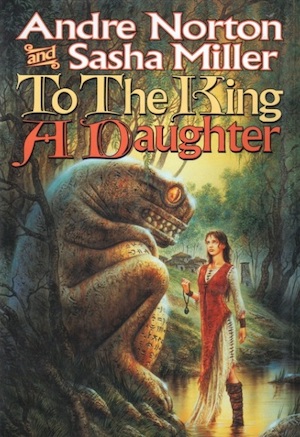I had never heard of this book, first of an eventual five-volume series, before I found it in the Andre Norton bibliography. It’s a collaboration with Sasha Miller, author of several fantasy novels of her own, and it came out quite late in Norton’s life, with the later volumes published posthumously. It’s essentially a Witch World hommage, not quite fanfic in that it’s supposedly set in a secondary world of its own, but the settings, characters, and world are clearly based on Norton’s iconic series.
There’s a medievalzoid realm ruled by four families—a la the Mantles of Arvon. There are Sea Rovers who are Sulcarmen with the serial numbers still clearly visible. There’s a huge, deadly Bog inhabited by a wide range of monsters and assorted clans and tribes of ugly, misshapen, barbaric people. There’s a tradition of Wisewomen, represented by the mysterious Zazar. There are ancient ruined cities everywhere, and in the first volume there’s a strong suggestion that the world is being invaded by aliens from another world or dimension.
Of all Norton’s novels, this one reminds me most of The Warding of Witch World, which is just about contemporaneous with it. It’s got that feel to it, the sense of many different elements packed into a complex plot, balancing each set of characters and settings with care and clear intent to weave them together into an eventual whole. Weaving in fact is the opening metaphor, the tapestry of fate that determines the lives and destinies of the characters.
Norton’s extensive oeuvre comes back again and again to a strong dualistic determinism. The universe is divided into Light and Dark, and incalculable, often (but not always) invisible forces shape the actions of all the creatures in it. Hence characters who, in every Norton book, act without knowing why, do things “instinctively,” just know what to do, or can’t resist doing whatever the plot needs them to do. It’s an unabashed metaphor for the way fiction works: the author conceives the plot and creates the characters to execute it.
Many authors write freehand and will assure you that the characters tell them what they want to do, but both plot and characters still come from the author’s mind. They’re creations; constructs. Norton openly acknowledges this, and makes it clear that her characters exist in order to perform the actions required by her plot. Her work is, in short, plot-driven, rather than character-driven.
Every Norton collaborator contributed elements of their own, and the different collaborations vary in quality. Some are more successful as collaborations; others make for grand reading but are more clearly the collaborator’s work than Norton’s. And some capture the flavor and essence of Norton while also letting the author’s own style shine through.
To the King a Daughter is one of these. It’s a Norton novel without a doubt. The style, the themes, the characters and settings, the descriptions—it’s all there.
Buy the Book


The Starless Crown
And yet there’s another mind working here, another talent. The prose is just visibly smoother, even while it faithfully echoes Norton’s rhythms and structures and word choices. The characters have just a little more depth, a little more inner life, but they’re still Norton characters.
There’s just a bit more sense of the moral compass of the protagonist, the essential goodness and fairness of the orphan child raised in the Bog. The dualism is a little less absolute: the wicked queen has strong reasons for what she does, and she cares deeply about the land she rules, even while her actions cause harm to others. She’s complicated in ways that Norton alone would not have been able to portray. And yet she’s very much in the vein of Norton older women rulers with feckless spoiled sons and miserable marriages.
I’m glad I came across this. In fact I’m partway into the second volume, though I won’t write an article on it here. It’s that engaging, and that entertaining. I’ll be checking out Miller’s solo work, too; I like what she brings to this collaboration, both her sensitivity to Norton’s themes and style and worlds, and her own perceptible writing skills.
You know how, when you’ve loved a series and the series is done and there will be no more, the sadness that brings? This series assuages a little bit of that, and introduces a new(ish) world that owes a strong debt to the dear and familiar one. It’s well done in that respect.
Next time I’m going to read a very different collaboration, one of the rare ones which paired Norton with a writer of at least equal standing in the genre: The Jekyll Legacy. That ought to be interesting.
Judith Tarr has written historicals and historical fantasies and epic fantasies and space operas, many of which have been published as ebooks. She has won the Crawford Award, and been a finalist for the World Fantasy Award and the Locus Award. She lives in Arizona with an assortment of cats, a blue-eyed dog, and a herd of Lipizzan horses.










